Joker have the charts to help you identify the common types of screws and head style for just about any project.
Why did you need to identify screw?
No matter you are a DIY or experienced professional purchaser, the topic of screws always lead to many questions.
In order to ensure safety of the connection of each construction, using the proper specific screw anchor is very critical when making the connection.
The following screw guide will give you a comprehensive overview of screw types, head styles, thread style, and application areas.
So that you can easy to choose the best screws for each project.
If you don’t choose the proper screws to fix on the right applications, it will not only cause collapse but also even serious casualties.
Content
› screw type – depends on substrate and object to be fixed
› head style – choose appropriate
› thread style – know more about screws thread to easy fix your project
› screw material – which condition need which material
Screw types
-
Concrete screw
Designed for fastening in concrete or masonry. In the past, screwing screws into concrete required metal expansion anchors and heavy anchors. Now only the concrete screw is needed, which is directly screwed into the base material. It is a non-expansion screw and will not lose the load capacity. It’s feature cut it own thread in the drilling, and only need to pre-drill a hole.
»see more about concrete screw
-
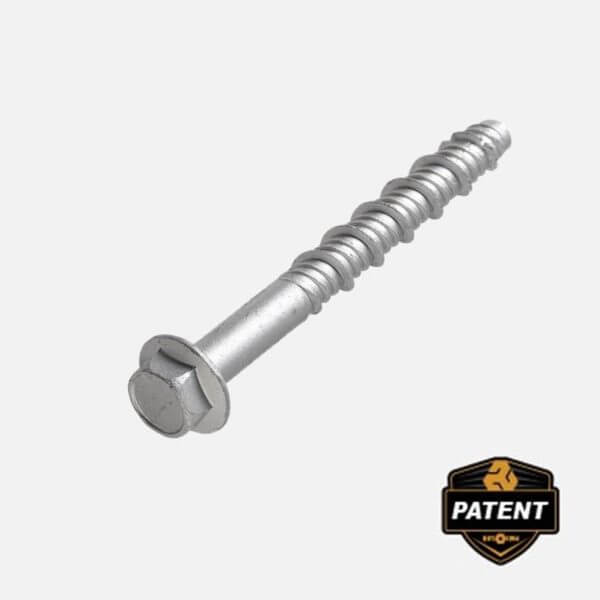
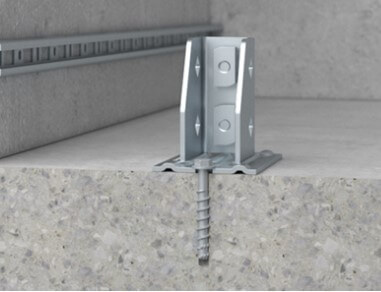
-
Wood screw
partially threaded with coarse threads and a smooth shank, which allows the screw to pull the wood pieces tightly together, usually had tapered poin, need pre-drilling.
-
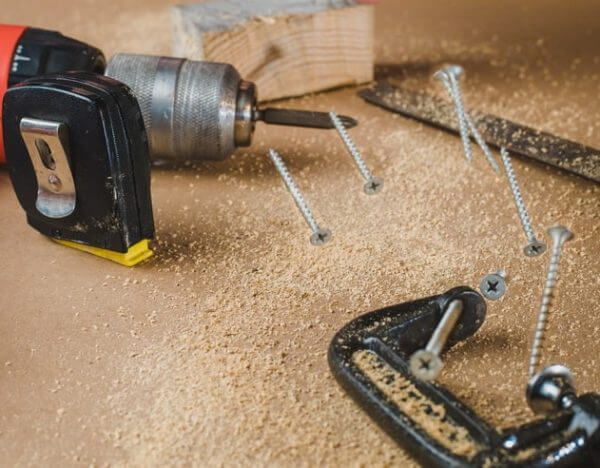
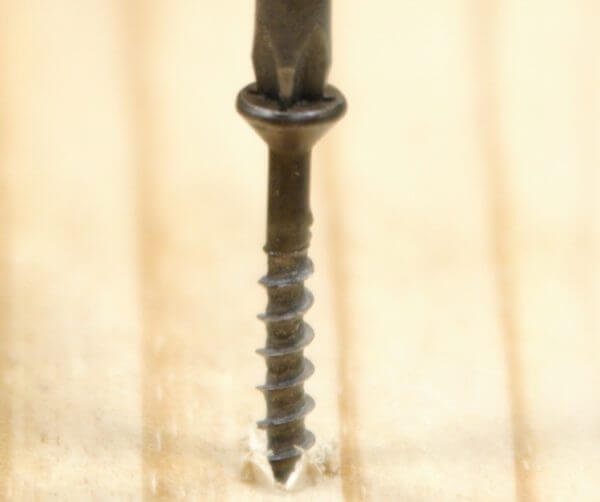
-
Drywall screw
are mainly used in drywall construction, attaching sheets of drywall to wall studs or ceiling joists, but don’t have the strength to support cement board and tile.Drywall screws are made of hardened, brittle steel, and the shank will often snap during installation, especially if they’re screwed into hardwoods.
-
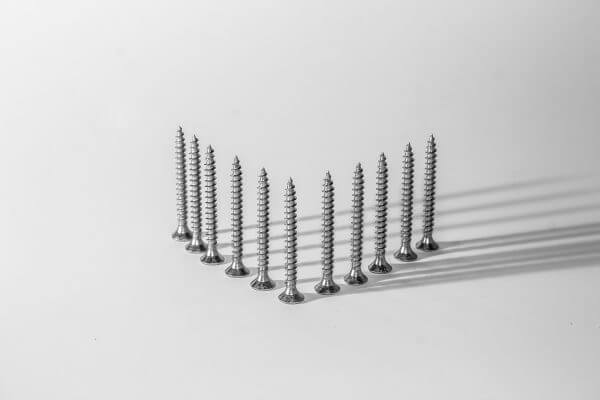
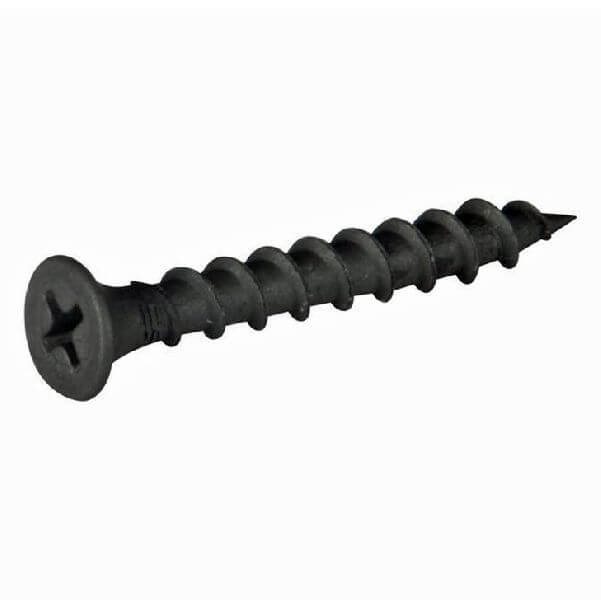
-
Deck screw
Deck screwfor attaching wood and composite deck materials, they must resist corrosion, drive easily, and lay smoothly against the deck surface, for these reasons, many deck screws are self-countersinking. Deck screws do not stress the wood, so you don’t end up with cracked, split and weakened areas around the fastening point. Deck screws are less brittle than wood screws and drywall screws.
Reference: https://woodgears.ca/joint_strength/drywall_screws.html
-
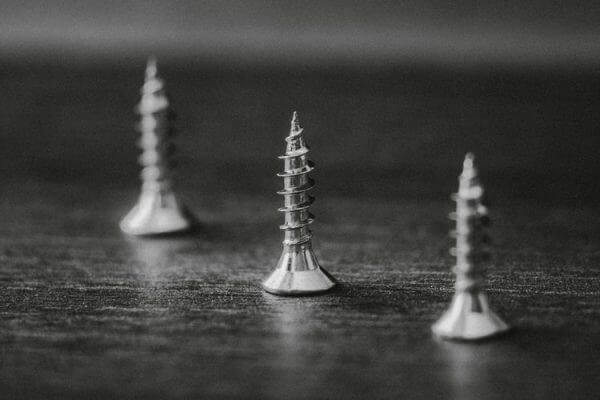
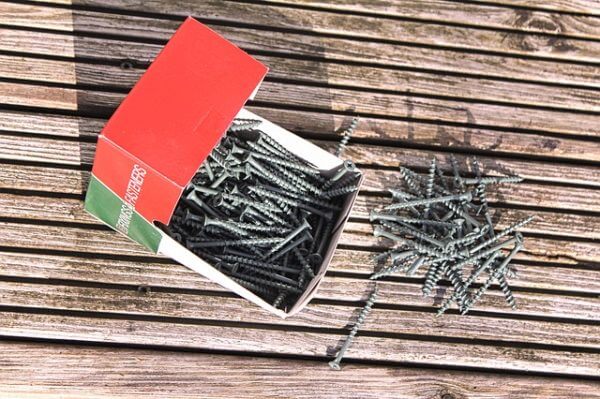
-
Lag screw
Hex Head with coarse threads and sharp points, easy and quick installation. Designed for fastening metal pieces with timber and also to fasten heavy timbers. The type also known as ”coach screw”. It’s important to use “lag screw” with a correct wrench so as to prevent the head getting damaged during installation. If necessary add washer to prevent sunk into the surface.
-

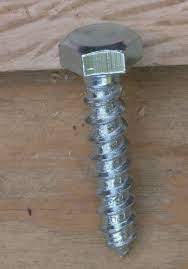
-
Sheet metal screw
for attaching metal hardware, plastic or wood, have sharp cutting threads, usually with self-tapping or self-drilling. They have a fully threaded shank and sometimes have a notched point at the tip to help chip removal during thread cutting.
-
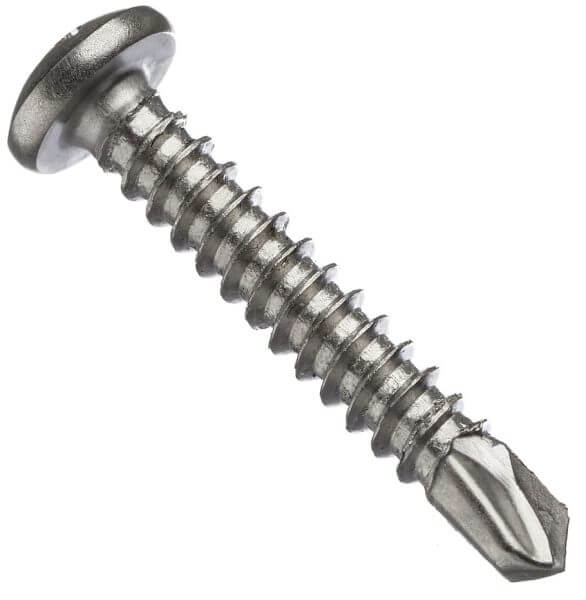
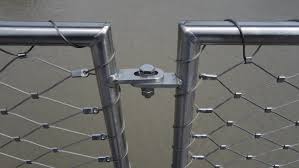
Head style
There is a reason for the different screw heads. It can help you find the right screw tool, finish the project easier and also decorate the surface. Only the threaded part will be beneath the surface, leaving the head outside, or flush with the surface.
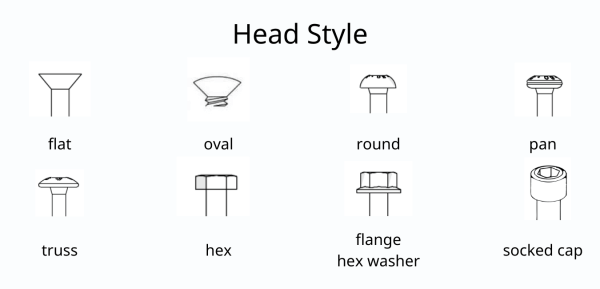
flat head-are installed in a countersunk hole for a smooth surface.
oval head-countersunk head with a low domed at the top, used primarily for decoration.
round head– are a domed head and a small bearing surface, used primarily for decorative purposes.
pan head– similar to round heads and truss heads, a common head
truss head-also called mushroom head, provides extra large bearing surface than pan or round heads.
hex head– allow for greater torque and typically tightened with a wrench, most common head
flange head– helps the screw to remain in its position, taking the place of a washer for some projects. To get rid of the deficiencies that use of washers. Flange head don’t suffer from higher strength fasteners lead to the washer sunken and indenting because the washer face is as strong as the bolt and nut itself.
socket cap– are ideal for applications in which there is not enough space to maneuver wrenches or sockets and typically used in machine parts, die fixturing,unique to socket drive screws.
Thread Style
The thread of a screw is the helical shape that runs around the cylinder of the screw and they are designed to meet the needs of specific applications.
Screw thread according to different application to divided into internal thread, external thread, machine screw thread, spaced threads, coarse thread and fine thread.
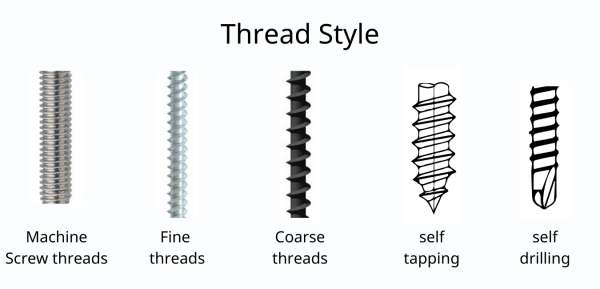
External threads – threads are on bolts or screws
Internal threads – threads are on nuts.
Machine Screw threads – designed to mate with preformed threads in nuts or tapped holes. Often used on bolts, set screws, machine screws.
Spaced threads– designed to form their own threads in pre-drilled holes. Often used on self-tapping, wood and coach screws.
Coarse threads– threads with larger pitch, have a larger thread form relative to screw diameter
Fine threads– threads with smaller pitch, have a smaller thread form relative to screw diameter
Screw material
First of all, different screw materials affect its quotation, except for single materials and even composite materials.
For example: Bi-metal is a combination of stainless steel and carbon steel.
First confirm the environment and the required tensile strength and corrosion resistance, and select the following common materials:
Steel (usually hardened), divided according to the level of carbon content: low carbon steel (0.02%~0.3%), medium carbon steel (0.3%~0.6%), high carbon steel (0.6~2%), usually galvanized or hot dip galvanized
Stainless steel-strong corrosion resistance, also known as white iron, commonly 304, 316
Plastic-usually marked PA: polyamide. These screws are lightweight and low in production cost. Unfortunately, they are not particularly resistant to high temperatures and have very little load-bearing capacity.
Aluminum
Brass